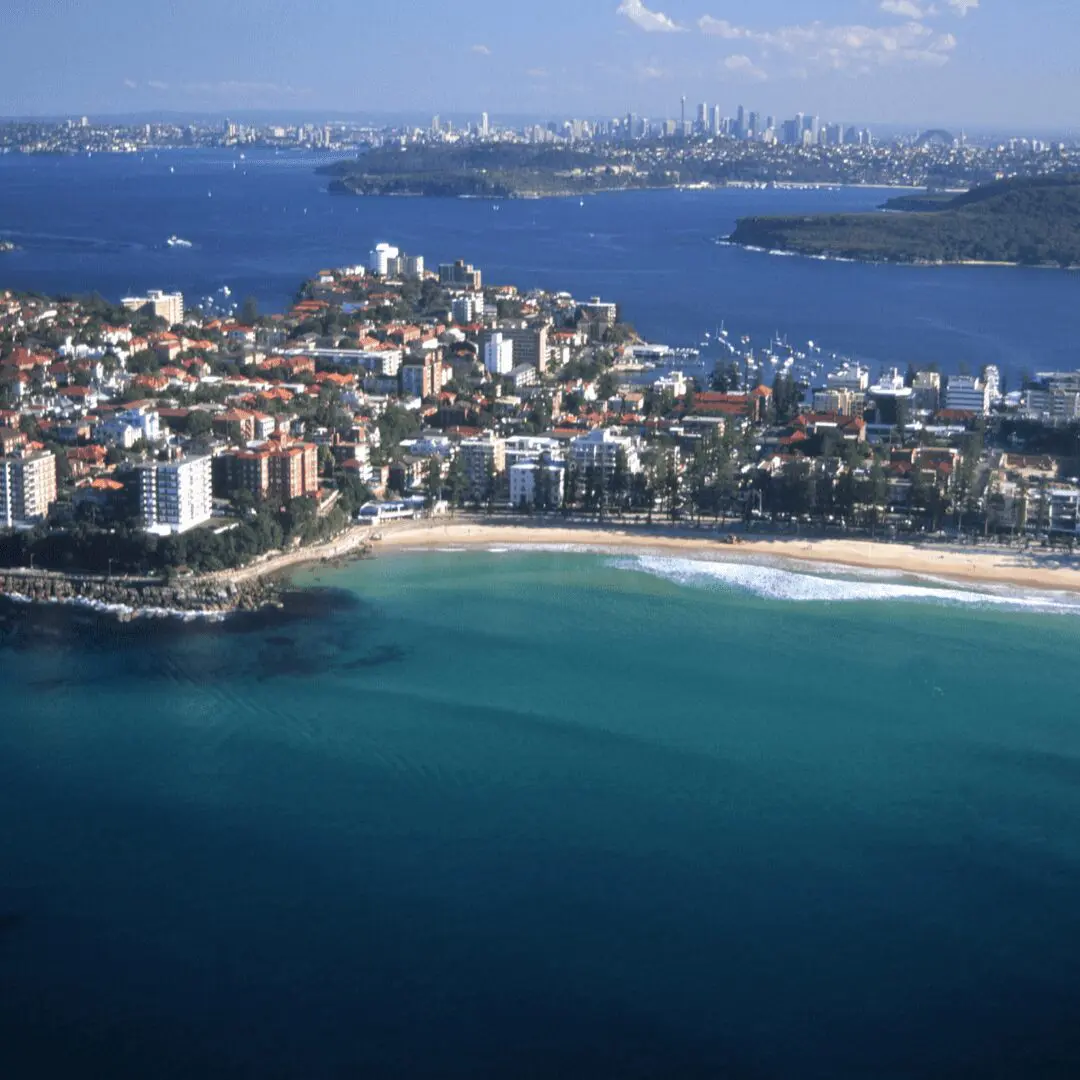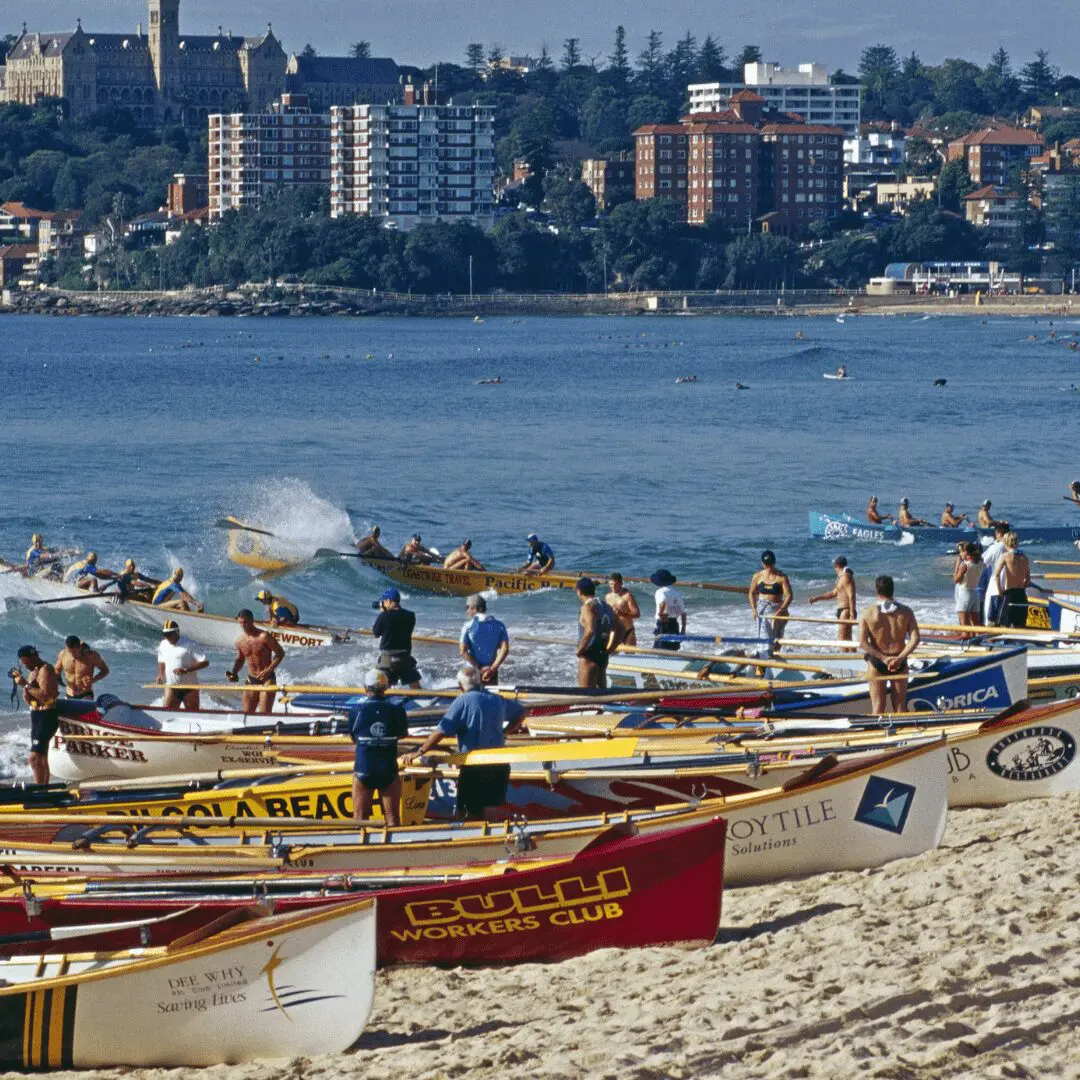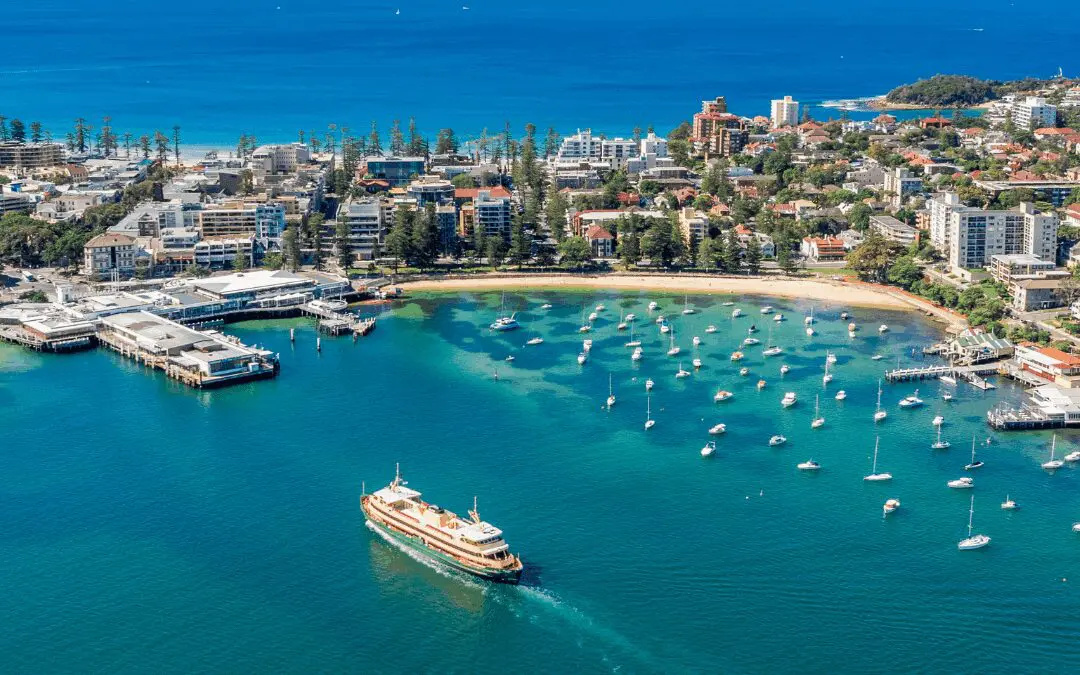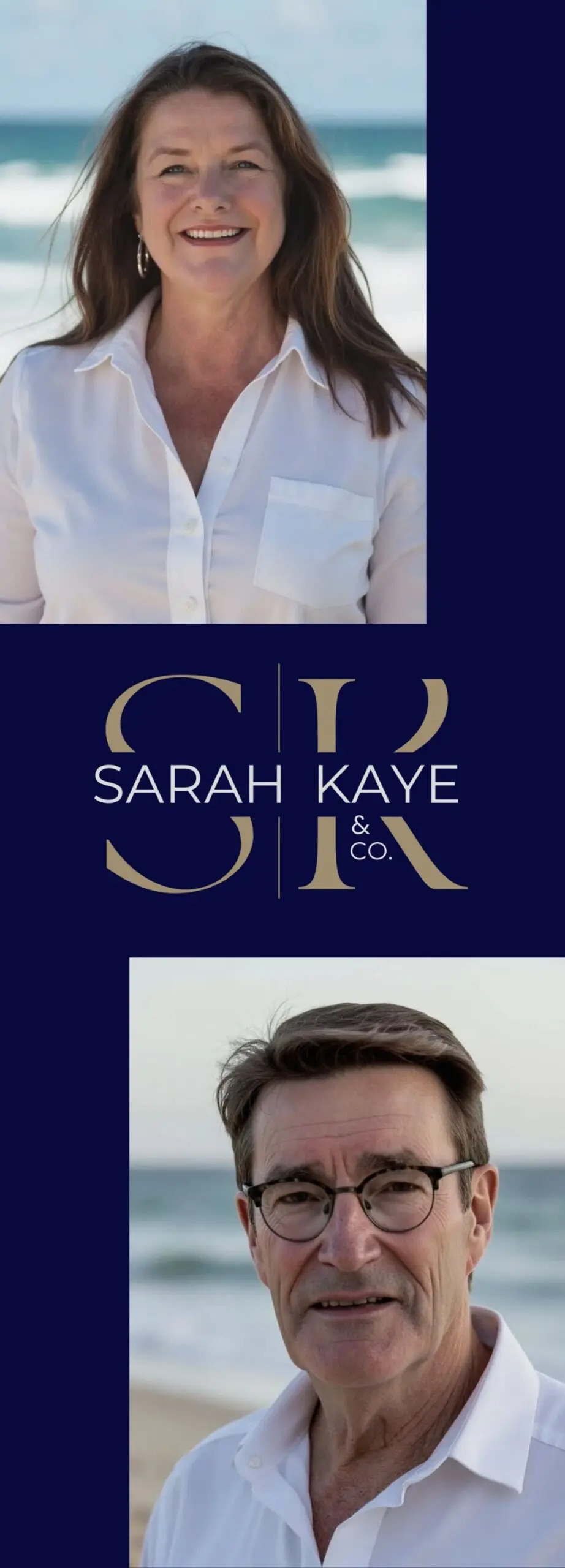Executive Summary
Manly house prices are some of the highest in Sydney, currently hovering around a median of $4.35 million. Interestingly, recent data shows that these prices have largely stabilised since the peak in late 2021. Even with its charming appeal, our detailed analysis places Manly 38th out of 42 Northern Beaches suburbs in terms of compound annual growth since 2017, indicating a stable market rather than one that continuously soars. As a Northern Beaches Buyers Agent, we find that many buyers are surprised by Manly’s slower growth compared to nearby suburbs with stronger long-term gains.
Rental returns in Manly are quite strong, with typical weekly rents around $1,900. However, due to those high purchase prices, the average rental yield is a modest 2.4%. This suggests that Manly’s house prices are more about lifestyle appeal and long-term capital appreciation than immediate investor gains. The housing supply remains limited, and there’s strong ongoing demand, which keeps these premium prices up, even though homes typically take 60–100 days to sell.
While it’s easy to think of affluent baby boomers as the primary buyers boosting Manly house prices, demographic analysis indicates a more diverse buyer profile that includes younger professionals and families as well. With its appealing 30-minute ferry ride to Sydney’s CBD, Manly’s property market continues to thrive, driven by genuine demand and limited housing availability.
Introduction: Myth vs. Reality in Manly
Manly on Sydney’s Northern Beaches frequently shines in conversations as a charming suburb known for its impressive house prices and an influx of affluent downsizers who are making it their home. As a trusted Northern Beaches Buyers Agent, we’ve guided clients through both the hype and the hard data, helping them cut through assumptions.
But is the excitement truly backed by the facts? In this profile, we embark on a myth-busting, data-driven journey to unveil the real story of Manly’s house prices – exploring everything from price trends and growth rates to rentals, supply, and the diverse range of buyers in the area. Our goal is to uncover whether Manly is indeed overhyped or genuinely deserving of its reputation as “just right.” We’ll also dive deeper into the popular belief that wealthy baby boomers are flocking to Manly and examine whether the evidence really supports that idea. All insights are shared in a warm and friendly tone, ensuring you get the genuine scoop behind the beachfront allure.
Manly House Prices by the Numbers: Key Property Metrics
To set the scene, here’s a snapshot of Manly’s current property metrics, with trend indicators showing the recent direction of each metric (▲ up, ▼ down, ↔ flat):

(Sources: Sarah Kaye & Co. internal sales data, realestate.com.au, ABS, and Northern Beaches market reports.)
This table showcases Manly’s impressive median house price of around $4 million, paired with steady long-term growth. While rental yields are quite low, the rental prices remain strong, reflecting a vibrant rental market. The number of available listings is notably limited, with homes generally taking a few months to find new owners. On a brighter note, the ferry ride to Sydney’s CBD (Wynyard) is a pleasant 30 minutes or so, which makes commuting from this charming suburb a truly enviable experience.
Now, let’s dive deeper into each aspect to understand what’s driving these numbers.
House Price Trends: High, But Growth Has Plateaued
Manly is certainly one of Sydney’s most sought-after suburbs, with a median house price hovering around $4.3 to $4.4 million. This makes it the priciest in the Northern Beaches and the third most expensive overall across all of Sydney! To give you some perspective, Sydney’s overall median house price is approximately $1.65 million, which means that homes in Manly are about 2.5 times higher than the city average. This premium reflects the wonderful beachside lifestyle and the limited land available in the area. But do you think the pricing is “overhyped”? Let’s take a closer look at the growth history to gain some insight:
- Long-term growth: Since 2017, Manly’s median house price has increased by approximately 35–40% in total, which equates to about 4% per year on average (compound annual growth) – solid but not outrageous. In fact, a local analysis indicates that Manly’s prices have risen by around 50% from late 2019 to late 2024 (from ~$2.9M to ~$4.36M). Most of that surge occurred during the pandemic boom of 2020–2021, rather than showing a steady year-on-year climb. Our analysis shows that its compound annual growth ranks 38th out of all 42 Northern Beaches suburbs.
- In 2021, Manly house prices experienced an exciting surge, with values skyrocketing by more than 35% in just one year! This remarkable increase was fueled by the COVID-era buying frenzy, characterised by ultra-low interest rates and a desire for more spacious living. By the end of 2021, the median price had climbed to the mid-$4 million range, capturing the peak of the excitement, as eager buyers helped push prices to new heights.
- Recent performance: Instead of continuing to soar, prices levelled off after 2021. In fact, as of early 2025 the median house price is essentially back to its late-2021 level (around $4.35M), indicating zero net gain over that roughly 3.5-year period. Data from late 2021 through 2024 reveals a slight dip followed by recovery: for instance, around $4.25M in Nov 2021, dipping to approximately $4.21M in 2022, then $4.41M in 2023, and about $4.36M in Nov 2024. In short, the growth has plateaued – Manly didn’t continue on an indefinite upward trend, but rather cooled off and stabilised.
So, what’s the latest trend? Recent signs show a stable-to-modestly rising trend for Manly house prices. After a bit of a slowdown in 2022–23 due to interest rate hikes, house prices in Manly for 2024–25 have stayed steady and even crept up a little. While Manly is still quite pricey, it’s not currently shooting up; rather, it seems like the market is just catching its breath. This challenges the idea that Manly is in a never-ending spiral; instead, the suburb went through a significant boom and is now enjoying a period of consolidation.

Manly House Rental Market: High Rents, Low Yields (Investors Beware)
If you think that owning a beautiful $4M+ house in Manly automatically leads to substantial rents, there’s a bit of a twist to that story. While rents in Manly are indeed impressive in dollar terms, the truth is that the soaring purchase prices mean that rental yields are quite low. This situation highlights a classic characteristic of blue-chip suburbs, where the appeal to owner-occupiers often takes precedence over investment returns.
- Median rentfor a house in Manly is roughly $1,850–$1,900 per week at present. That works out to about $7,500–$8,000 per month, which may seem substantial—and it is among the highest in Sydney. (In fact, around 40% of Manly residents are renters, despite the costs, thanks to the appealing lifestyle and a healthy availability of units/apartments in the area.) Over the past year, rents have surged by approximately 8–9%, reflecting Sydney’s wider rental squeeze. For instance, average weekly house rent increased from about $1,650 a year or two ago to roughly $1,800+ now. Many families and expats are prepared to pay a premium to live close to Manly Beach, driving rents to unprecedented highs.
- Currently, the average gross rental yieldon houses is only about 1–2.4% per annum. This means that if you purchase a house for $4.3M and rent it for approximately $1.9k a week, you would be getting around $100k per year in rent, which is just about 2.3% of the purchase price. Based on our internal dataset, which reflects a bit of a lag behind the latest rent spike, the yields for houses were closer to 1.5% (for example, a $4.35M house that rents for approximately $1,250 per week). However, more current sources indicate a yield closer to 2.4% due to the rapid increase in rents. Even this 2.4% rate is quite low when compared to Sydney’s average yield of around 3–4%. This significant gap between rental return and property value suggests that Manly may not be the best choice for yield-focused investors; instead, it appears to be more about capital growth and lifestyle. Many owners in Manly are likely to be owner-occupiers or long-term holders rather than typical investors, as placing your money here doesn’t yield much immediate cash flow.
- Rental trend: The trend for rents isstrongly upward (▲). The tight rental market in Sydney has severely impacted beach suburbs – low vacancy rates and high demand have pushed rents significantly higher. Manly’s median house rent surged nearly 17% from 2021 to 2024 (from ~$1,550 to $1,800/week on average). While this situation benefits existing landlords (and contributes to a slight improvement in yields from abysmal to merely very low), it poses challenges for tenants. There is anecdotal evidence of bidding wars for rentals, with professionals paying top dollar to live close to the ferry and beach. We’ll also note that yields for units in Manly are a bit higher (~3%) since apartments are cheaper but still command high rent – but even 3% is only middling.
The rental data really highlights an important aspect: Manly’s property market is more about lifestyle and capital values rather than rental returns. It’s a lovely place where people are happy to pay a bit more to enjoy living here, whether that’s through high rents or a significant purchase price. So, for investors looking for big yields, it might be a bit of a letdown. This low-yield trend is quite typical in prestigious suburbs. Interestingly, the rise in rents (along with a slight uptick in yields) shows that while prices have cooled, rents have increased, which is a nice shift from the previous boom when prices were climbing much faster than rents.
For a prospective landlord or someone crunching numbers, this indicates that a house in Manly likely won’t “pay for itself” from rental income – you bank on capital growth (which, as we saw, has paused recently). For renters, it means paying a substantial amount for the privilege of that Manly lifestyle.
Manly House Supply and Demand: Listings Scarce, Days on Market Mixed
One reason Manly’s house prices remain high is the chronic shortage of houses on the market. This suburb isn’t a large-volume market; turnover is relatively low, and competition for the few listings can be intense. Let’s examine supply and demand indicators:
- Listings (supply): On average, only around a dozen or so houses are listed each month in Manly (sometimes even fewer). For instance, one recent metric showed that 12 houses were listed in the past month. Likewise, as of late 2024, there were only about 75 houses actively for sale in Manly in total (compare that to 55 houses sold in the entire previous 12 months). These are tiny numbers for a suburb population of approximately 16,000 people. In essence, very few people in Manly are selling at any given time – whether due to contentment, wealth allowing them to hold, or lack of somewhere else to go. Low supply (▼) is a persistent reality that supports prices. Buyers face limited choices and often have to wait for the “right” property to appear.
- Buyer demand: Demand in Manly maintains a steady underlying strength. Real estate portals report high engagement (e.g. hundreds of interested buyers per listing online), and our own experience indicates that desirable properties (think renovated beachside houses) still attract multiple bidders. Manly’s lifestyle—beaches, cafes, good schools, ferry to the CBD—ensures a broad buyer pool: from young professionals to international expats to local upgraders and downsizers. Even during Sydney’s market lulls, Manly typically exhibits resilient demand. One data point: in 2024, most homes in Manly were selling within 30–60 days despite the market cooling, a sign that well-priced homes find buyers in a reasonable timeframe.
- Days on Market (DOM): Here we observe some conflicting signals. How long does it take to sell a house in Manly? According to a CoreLogic-based report for late 2023, houses spent an average of about 61 days on the market (approximately two months). This suggested fairly brisk turnover given the high price bracket. However, more recent figures from realestate.com.au indicate a median of 106 days on the market for Manly houses – suggesting many houses now take over 3 months to sell. Why this discrepancy? It could be due to differing methodologies (average vs median, or including stale listings), but it likely also reflects the 2023–2024 slowdown: as interest rates rose, buyers became more cautious, and some sellers overshot on price, leading to longer selling times. In a market as pricey as Manly, buyer pools are smaller, so sales can stretch out unless the property is exceptional or keenly priced. The trend in DOM is trending upward (▲) recently – homes are generally taking longer to sell now compared to the frenzied 2021 period (when some would trade in mere weeks).
- Sales volumes: Only around 40 to 60 house sales occur annually in Manly, with variations from year to year. For instance, about 55 houses sold in the 12 months leading up to late 2024, whereas more recently, the annual sales count appears to be under 40, indicating even fewer transactions in the past year, possibly due to owners holding off in a softer market. This low turnover suggests that the data can be somewhat noisy—one significant sale can skew the median—but it also reveals a key insight: Manly is tightly held. Many homeowners here are long-term residents; when they do sell, it’s a notable event.
In summary, the imbalance of low supply and steady demand is a fundamental factor in Manly’s house prices. Even if price growth is currently flat, it remains at a very high level due to scarcity. For buyers, this signifies competition and the need to act quickly or consider off-market options. For sellers, it results in reduced competition from other listings, although aligning with the market price is still crucial (overpricing can lead to a property sitting unsold for months). We promised transparency: it’s worth noting that some sources portray Manly as a super hot market with homes flying off the shelf, while others indicate a cooling – the truth lies somewhere in between. Well-presented homes in Manly do sell, but the days of properties selling overnight are gone; today’s buyers are discerning and price-sensitive.
We also transparently highlight the data discrepancy: 61 days vs 106 days DOM from two reputable sources. This could be due to timing (the 61-day stat was an average during the busier 2021–early 2022 period, whereas 106 days reflects 2023 conditions). It serves as a reminder that data needs context – which we’re providing throughout this report.
Accessibility: Commute to CBD (Is Manly “too far”?)
One frequently mentioned downside of Sydney’s Northern Beaches is its poor train connections, and road traffic can be quite frustrating. Manly, however, has a distinct advantage: the Manly ferry. This iconic ferry service (along with fast ferries and express buses) makes commuting from Manly to the CBD (Wynyard) fairly reasonable time-wise, and often quite enjoyable. Here are the key points:
- Ferry to Circular Quay: The public ferry from Manly Wharf to Circular Quay operates frequently (every 15-20 minutes, with extra services during peak hours). The ride takes about 20–30 minutes across Sydney Harbour. Many residents of Manly rely on this ferry – it’s a scenic, relaxing commute by water. Once at Circular Quay, it’s a 5-minute walk or one train stop to Wynyard Station (in the heart of the CBD). There are also private fast ferries that can complete the journey in around 20 minutes flat, landing at Circular Quay or nearby Barangaroo. Overall, travelling from Manly to downtown Sydney typically takes around 30 minutes via ferry, plus a few minutes of walking. That’s comparable to or even quicker than many inner-west or north-shore train commutes.
- Buses: Manly is also served by express buses (e.g., the B-Line and others) that go to the city. A bus from Manly to Wynyard can take about 40–50 minutes in good conditions, but longer during peak traffic. The B-Line (a frequent double-decker service) doesn’t start right in Manly, but nearby suburbs like Manly Vale and Dee Why connect to it. Many commuters drive or catch a bus to a B-Line stop. Still, for those living right in Manly, the ferry is usually the preferred mode of transport.
- Connectivity verdict: Thanks to the ferry, Manly is surprisingly well-connected considering its 17 km distance from the CBD. The phrase “ferry commute” even enhances Manly’s allure – not many suburbs offer a boat ride to work with ocean breezes and harbour views. Thus, travel time to Wynyard is not a significant drawback; if anything, it contributes to Manly’s charm. Public transport is reliable and won’t get caught in traffic on the water. We mark this metric as stable (↔) because there haven’t been significant changes – travel times are about the same as they’ve been for years (barring the occasional faster ferry introduction).
For a buyer concerned about commuting, Manly offers a unique blend of distance and accessibility. You’re away from the hustle (it feels like a beach town), yet you can reach the city in half an hour. This helps justify why Manly isn’t just a holiday locale but a viable home base for professionals and executives (who can afford those multi-million prices). It’s also worth noting that within the Northern Beaches, Manly is situated at the southern end, making it one of the closest beach suburbs to the city – another factor in its premium.

Who’s Buying Manly Houses? The Downsizer Question (Boomers or Buzz?)
A popular storyline suggests that wealthy baby boomers – having sold their large family homes elsewhere – are flocking to Manly, driving up prices. The image portrays affluent retirees or empty nesters trading suburban backyards for a breezy apartment or semi by the beach. But how true is this narrative? Let’s examine the evidence:
- Anecdotal support: Local real estate agents have indeed observed a strong presence of downsizers. Even a few years ago, it was noted that roughly 40% of Manly buyers were coming from outside the area and downsizing – for instance, individuals from the Upper North Shore or other parts of Sydney moving into Manly for lifestyle reasons. A 2018 Northern Beaches property report likewise stated that “older Australians…having sold the big family home are driving the northern beaches property market,” with downsizers described as some of the most active buyers. These buyers are typically financially secure (often purchasing without loans) and seek low-maintenance luxury, which Manly can certainly offer (think modern apartments with ocean views or townhouses near the Corso). The appeal for boomers is clear: excellent cafes and restaurants, world-class beach, walkability, and still an easy ferry to the Opera House or a short trip to see grandkids on the North Shore. So yes, qualitatively, agents consistently report that downsizers are key players in Manly’s market.
- Demographic data: Now for the myth-busting twist. Despite those stories, Manly has not transformed into a retirement village by any means. In fact, the suburb’s demographics lean more towards middle-aged and younger professionals than the Sydney average. The median age in Manly is 38, which is about the same as the national median and slightly younger than the NSW median of 39. The largest age group in Manly is actually 30–39-year-olds, suggesting that many residents are in the early stages of family-raising or peak career, rather than just retirees. Additionally, census data indicates that the proportion of seniors in Manly (people aged 65 and over) is not unusually high; it’s roughly in line with or slightly lower than the NSW average. So, while there are certainly many older residents, they haven’t dominated the population balance.
- Migration patterns: We don’t have suburb-specific migration stats readily available for this report, but broader trends suggest that some baby boomers do relocate to lifestyle areas (beaches, coastal towns) when downsizing – however, a significant majority actually prefer to age in place or downsize locally. A recent national survey revealed that nearly 70% of empty-nesters have no intention of downsizing at all, often due to emotional attachments and financial disincentives (e.g., stamp duty, effects on pensions). Those who do downsize may favour apartments in familiar neighbourhoods or sea-change locations like the Sunshine Coast. Specifically for Manly, downsizers encounter competition and high prices – not every retiree can afford a $3–4 million downsizing purchase. Many of the downsizers purchasing in Manly are exceptionally wealthy, possibly selling a home in Mosman or Chatswood for $5 million and comfortably spending $3 million on a luxury Manly apartment. That’s a niche group.
- The reality is that the narrative of boomers flooding Manly is partly true but exaggerated. Yes, wealthy downsizers form a significant buyer segment and have likely contributed to rising prices for certain high-end properties. However, they are just one of several key buyer groups. Manly also attracts young finance and tech professionals, expats returning from overseas, and families—both local upgraders and interstate movers. The property data reflects this mix: record apartment prices are seen in Manly’s new developments targeting downsizers, alongside strong demand for family houses near quality schools, sought after by professionals in their 30s and 40s with children. The presence of 40% renters indicates a considerable number of transient young people and professionals as well.
In short, affluent baby boomers downsizing to Manly is a genuine phenomenon, but it’s not the whole story. It’s supported by anecdotal evidence and some sales results (e.g., downsizers snapping up high-end semis and units). However, hard evidence like demographic shifts doesn’t indicate a massive gray wave taking over Manly—the suburb remains a mix of ages, leaning more towards “established affluent family” than “retiree haven.” The hype that downsizers alone are driving up Manly’s prices is an oversimplification; fundamentals like limited supply, broad lifestyle appeal, and proximity to the city are equally important. Interestingly, some policy analysts argue that not enough boomers are downsizing overall (hence discussions about incentivising them to move to free up housing), so those who do choose Manly are relatively few but noticeable.
Conclusion: Is Manly Overhyped or Just Right?
Manly, NSW is a suburb that lives up to much of its hype but also surprises with its reality. The data-driven picture of Manly House prices presents a high-priced market underpinned by genuine demand and scarce supply, rather than a speculative bubble. Manly house prices are astronomical, yes, but they’ve held steady for several years instead of spiralling out of control – suggesting that the market has found its level and is just about right given Manly’s unique offerings. The hype of endless growth has been tempered by recent flat performance (a myth busted: even Paradise can plateau).
At the same time, the reason Manly commands such hype becomes clear in the numbers and facts: it has Sydney’s third-highest house prices for good reason – a combination of lifestyle (beach + café culture), connectivity (30-min ferry), and limited housing stock. These factors create a floor under Manly house prices.
We also debunked the “boomer takeover” myth to some extent: Manly isn’t only the realm of downsizing millionaires; it’s a diverse, vibrant community with plenty of younger professionals and families involved. The image of only wealthy retirees sipping coffee by the beach is misleading. Yes, they’re there, but so are the surfers, the stroller-pushing parents, and the renters in share houses – all part of the fabric that makes Manly… Manly.
Bottom line: Is Manly overhyped? Probably not. The data suggests Manly house prices had their big run-up and are now stable at a high level. If anything, some metrics (like the flat growth since 2021 or the low rental yields) show that expectations might need calibrating – Manly isn’t a runaway train of profit; it’s a blue-chip locale where your money buys lifestyle and long-term value more than quick gains. The suburb’s popularity is justified, but the frenzy has cooled to a healthy, sustainable buzz. For buyers, that means an opportunity to get in without the panic of 2021, though you’ll still pay top dollar. For owners, it means your asset is holding value in a prime location – no imminent crash is evident, but also don’t bank on another sudden boom.
In the end, Manly house prices appear “just right”: expensive and esteemed, yet grounded in real demand and real constraints. The hype is best replaced with insight: knowing the true trends (now you do!), you can approach Manly’s market with clear eyes. As always, we recommend looking at multiple data sources and seeking local expertise – Manly’s micro-market nuances can be subtle. But one thing’s for sure: this beachside suburb isn’t just a pretty face; it has the numbers to back up its reputation, even if those numbers require a nuanced read. Overhyped? No – more like highly sought-after, with a reality check. And in a place as genuinely splendid as Manly, the real surprise might be that the reality matches much of the hype after all, once you cut through the myths.
Sources: Manly market data from Sarah Kaye Buyers Agents – Northern Beaches analysis, NSW government statistics, ABS Census QuickStats, realestate.com.au and Domain suburb profiles and local property reports. All efforts have been made to reconcile differing data and present an accurate, up-to-date picture.


